Marklin 700 Series Locomotives
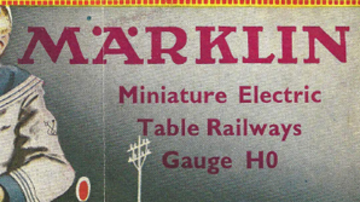
The 700 series from Marklin was the very first 00/HO series and denotes the earliest 00 motor type. These locomotives first came out in 1935 and were phased out in 1938 with the introduction of the 800 series. All 700 series locomotive motors and frames are fairly similar with some differences between smaller locomotives like the R 700 and bigger ones like the HR 700. The HS 700 and HR 700 locomotives have different larger frames and slightly bigger armatures. The TWE 700 triebwagen has a more simplified motor frame and additional holes and brackets for mounting the motor to the housing.
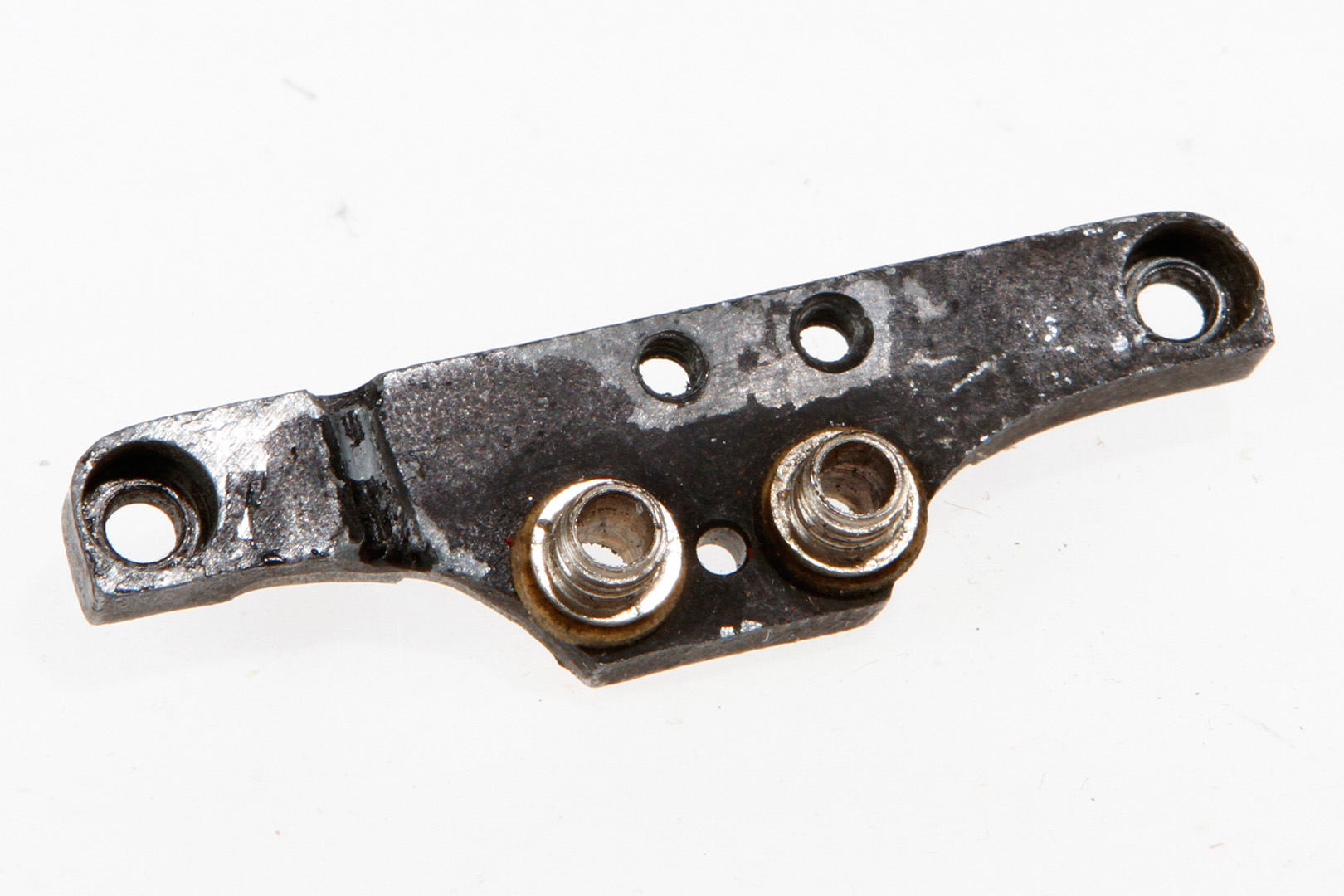

We can also see the TWE 700 motor in addition to having some additional holes and a metal bracket is missing a post on top toward the front that the other 700 series locomotives have for screwing the housing. Likely Marklin used a similar diecast mold but just had a special insert to remove this post for the TWE 700 frame.
Back to the regular motor for locomotives like the SLR, R, RS 700 we can see that the two wires going off the field magnet control the direction of the locomotive. The two wire leads are soldered onto the plate terminals. The third terminal is soldered to the pickup shoe through another wire. Thus by switching the hand lever on the far right, we can change the direction of the locomotive. The example below has the field magnet rewound with new wiring because the old wire leads broke off as they are very fragile.
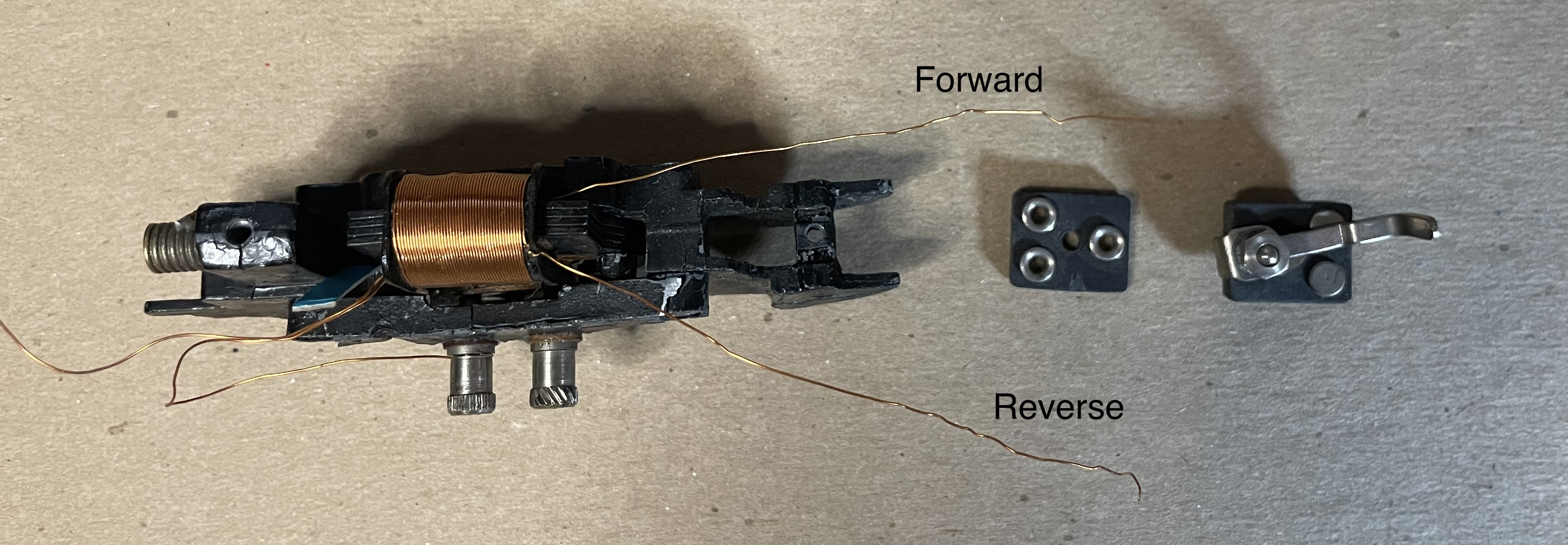
It’s common that the fragile copper wires on the field magnet break and the motor no longer functions. In some cases, we can see the end of the broken wire and can solder a new lead onto it. In other cases the broken end is lost in the spool of wires and we must rewind the entire motor.
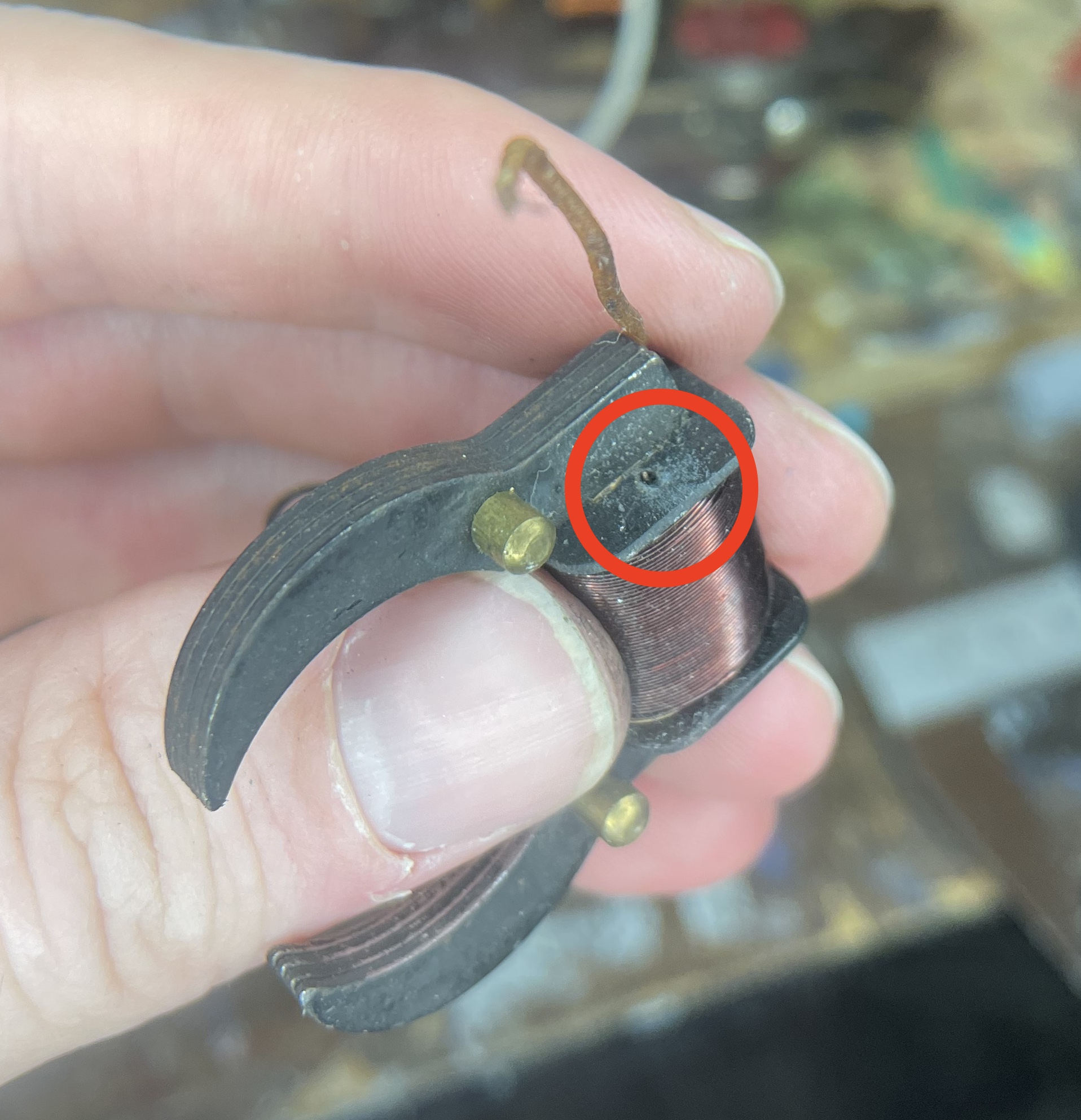
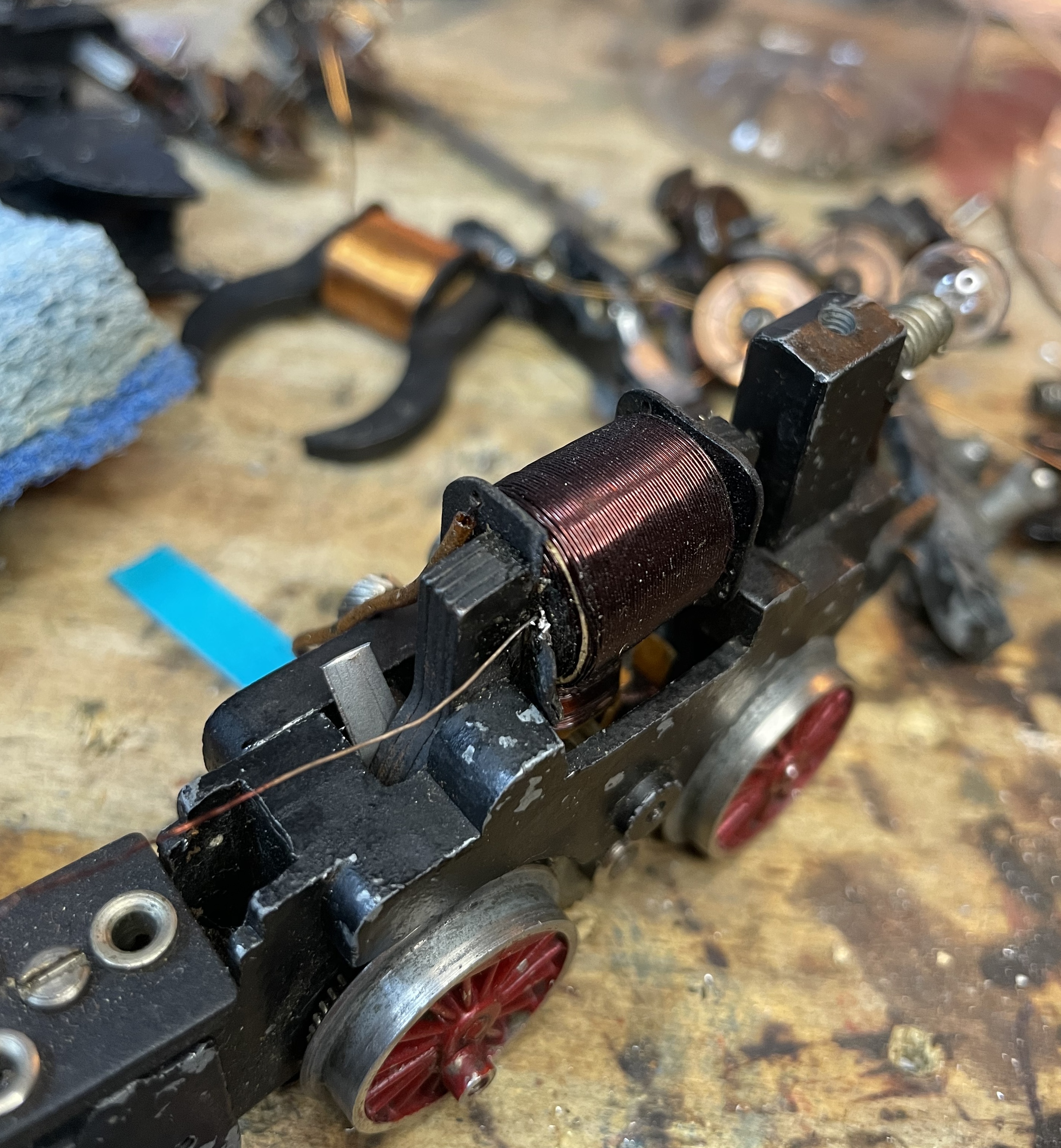
Now that we know that the two wire leads on the right side of the field magnet control the direction, we have the wire leads on the left side of the field magnet. On original Marklin field magnets, there is just one wire but rewound ones often have two (for each direction). These wires must make contact with the left motor brush and are soldered onto a round metal ring. The wire fits into a grove in the motor brush bracket so that it is flush and the locomotive outer frame can fit over.
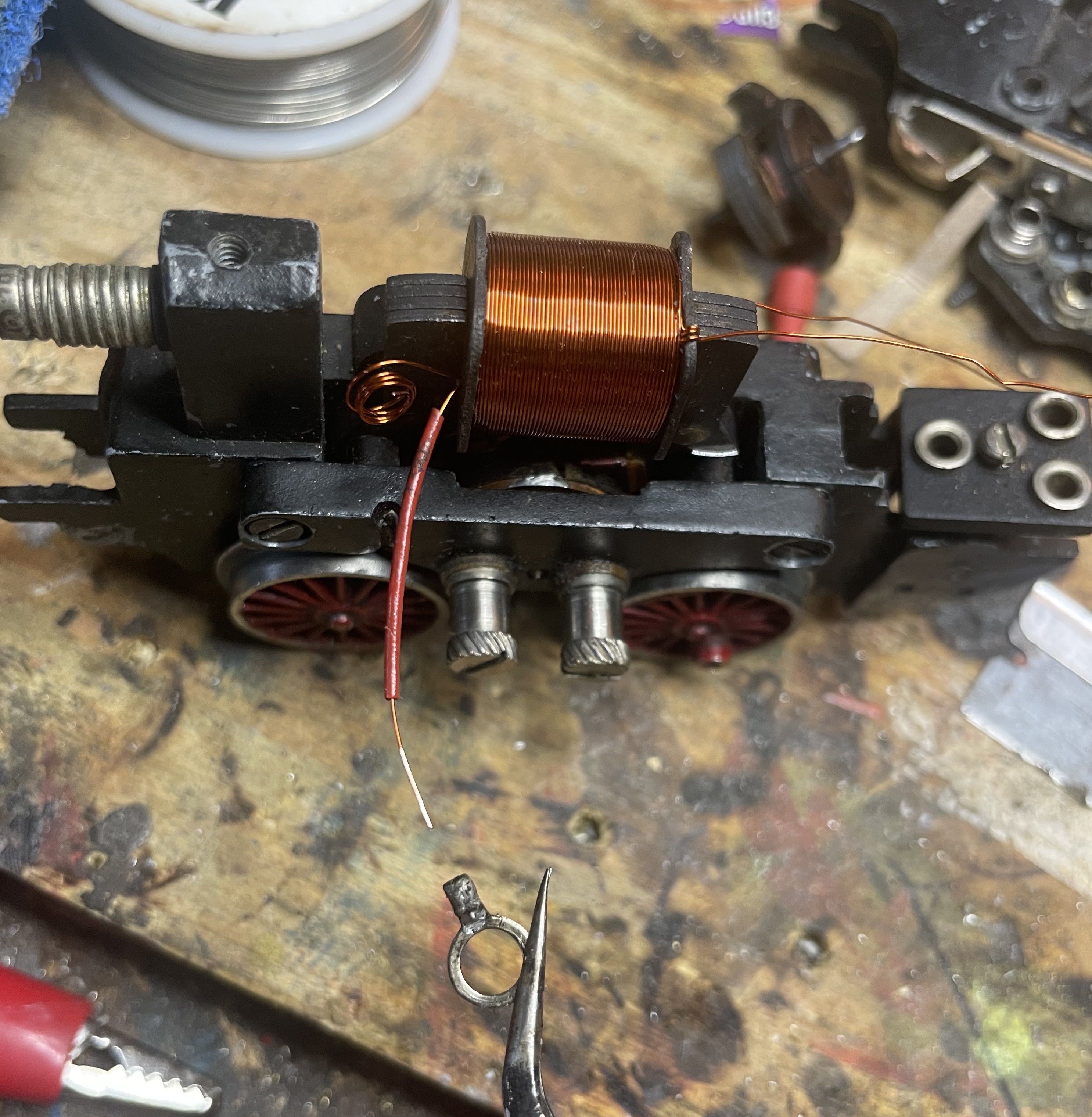
With the field magnet wiring complete, we now focus on mechanical issues common to thee 700 series motors. The frames and brackets are often warped, but still functional and sound after glueing and repair. In order to have smooth operation, the field magnet must be fixed firmly in place otherwise the spinning armature will rub against the field magnet or get magnetically “stuck” to it. The motor brush holder piece holds the field magnet into place and is screwed into the frame with two screws. Shims are often necessary to bridge the gap and insure the field magnet is secure. Strong cardstock or thin sheet metal shims can be used.
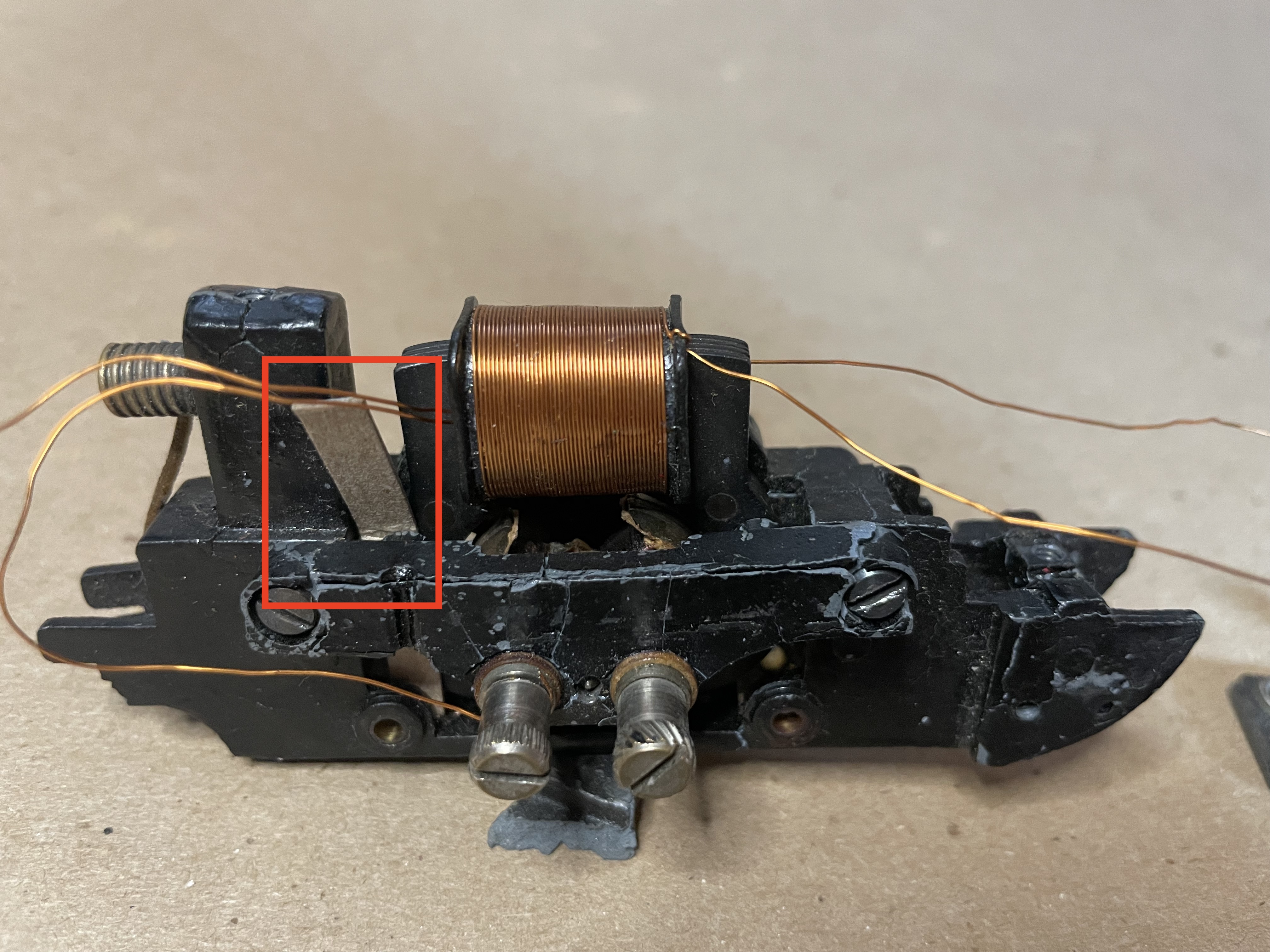
When the field magnet is secure, it should be completely fixed and not move within the frame. A clicking sound when the armature is spun indicates the armature is not properly aligned. Buzzing of the locomotive with no spinning often means the armature is stuck against the field magnet or there is an electrical short. Next we discuss the motor brushes which are an important part. One carbon brush and one copper mesh brush. Both brushes must make constant contact with the armature and are held into place with two springs.
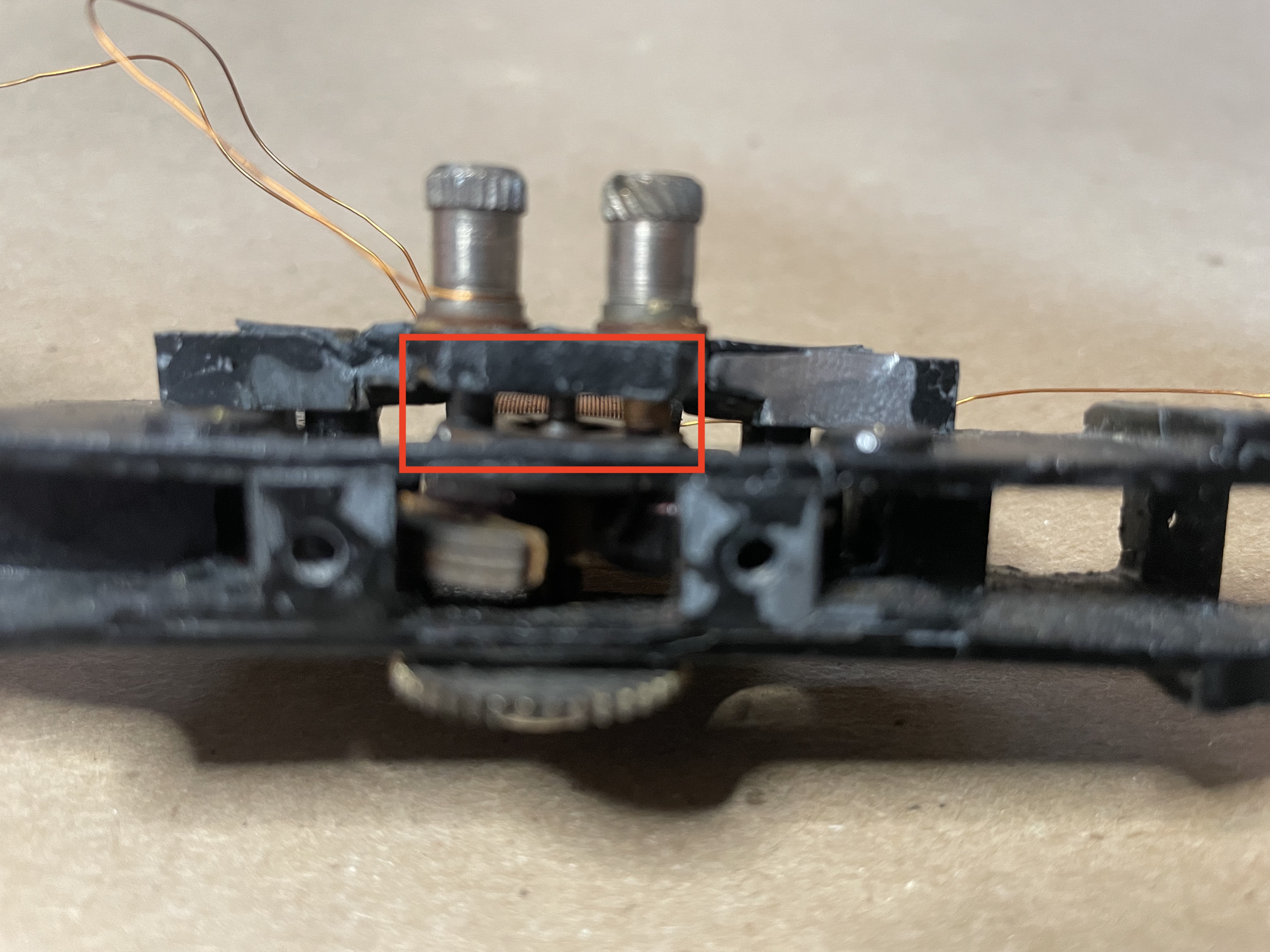
That concludes our overview of 700 series motors, common mechanical issues, and wiring setups. As with any moving system of parts, some oil at points of friction (gears, axles, armature ends, etc.) helps with the smooth performance of the locomotive.

